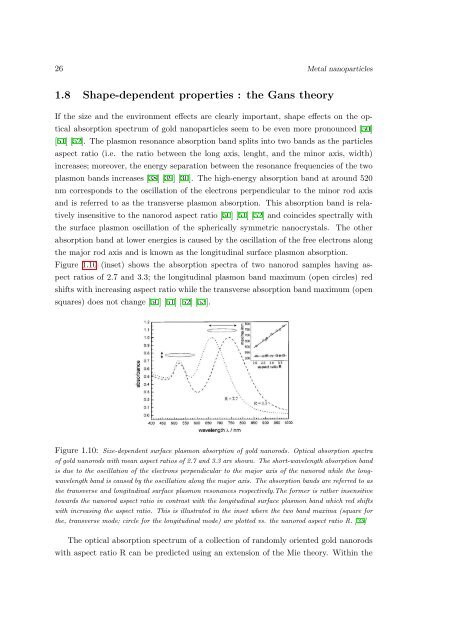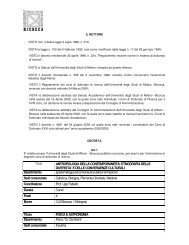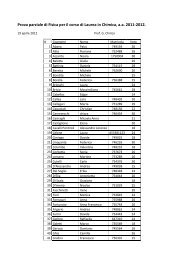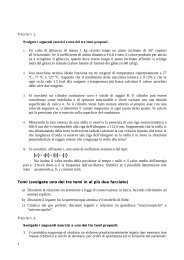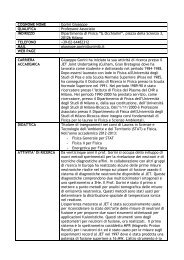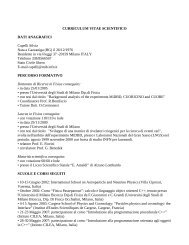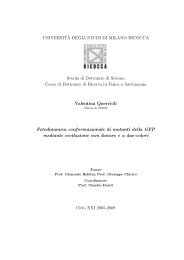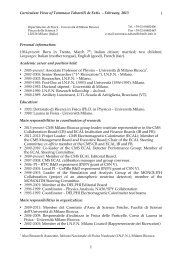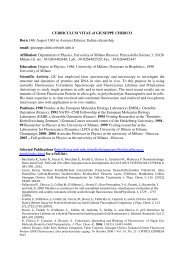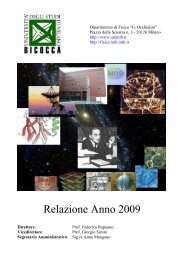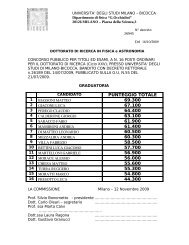Nanoparticles for in-vitro and in-vivo biosensing and imaging
Nanoparticles for in-vitro and in-vivo biosensing and imaging
Nanoparticles for in-vitro and in-vivo biosensing and imaging
You also want an ePaper? Increase the reach of your titles
YUMPU automatically turns print PDFs into web optimized ePapers that Google loves.
26 Metal nanoparticles<br />
1.8 Shape-dependent properties : the Gans theory<br />
If the size <strong>and</strong> the environment effects are clearly important, shape effects on the optical<br />
absorption spectrum of gold nanoparticles seem to be even more pronounced [50]<br />
[51] [52]. The plasmon resonance absorption b<strong>and</strong> splits <strong>in</strong>to two b<strong>and</strong>s as the particles<br />
aspect ratio (i.e. the ratio between the long axis, lenght, <strong>and</strong> the m<strong>in</strong>or axis, width)<br />
<strong>in</strong>creases; moreover, the energy separation between the resonance frequencies of the two<br />
plasmon b<strong>and</strong>s <strong>in</strong>creases [38] [39] [30]. The high-energy absorption b<strong>and</strong> at around 520<br />
nm corresponds to the oscillation of the electrons perpendicular to the m<strong>in</strong>or rod axis<br />
<strong>and</strong> is referred to as the transverse plasmon absorption. This absorption b<strong>and</strong> is relatively<br />
<strong>in</strong>sensitive to the nanorod aspect ratio [50] [51] [52] <strong>and</strong> co<strong>in</strong>cides spectrally with<br />
the surface plasmon oscillation of the spherically symmetric nanocrystals. The other<br />
absorption b<strong>and</strong> at lower energies is caused by the oscillation of the free electrons along<br />
the major rod axis <strong>and</strong> is known as the longitud<strong>in</strong>al surface plasmon absorption.<br />
Figure 1.10 (<strong>in</strong>set) shows the absorption spectra of two nanorod samples hav<strong>in</strong>g aspect<br />
ratios of 2.7 <strong>and</strong> 3.3; the longitud<strong>in</strong>al plasmon b<strong>and</strong> maximum (open circles) red<br />
shifts with <strong>in</strong>creas<strong>in</strong>g aspect ratio while the transverse absorption b<strong>and</strong> maximum (open<br />
squares) does not change [50] [51] [52] [53].<br />
Figure 1.10: Size-dependent surface plasmon absorption of gold nanorods. Optical absorption spectra<br />
of gold nanorods with mean aspect ratios of 2.7 <strong>and</strong> 3.3 are shown. The short-wavelength absorption b<strong>and</strong><br />
is due to the oscillation of the electrons perpendicular to the major axis of the nanorod while the longwavelength<br />
b<strong>and</strong> is caused by the oscillation along the major axis. The absorption b<strong>and</strong>s are referred to as<br />
the transverse <strong>and</strong> longitud<strong>in</strong>al surface plasmon resonances respectively.The <strong>for</strong>mer is rather <strong>in</strong>sensitive<br />
towards the nanorod aspect ratio <strong>in</strong> contrast with the longitud<strong>in</strong>al surface plasmon b<strong>and</strong> which red shifts<br />
with <strong>in</strong>creas<strong>in</strong>g the aspect ratio. This is illustrated <strong>in</strong> the <strong>in</strong>set where the two b<strong>and</strong> maxima (square <strong>for</strong><br />
the, transverse mode; circle <strong>for</strong> the longitud<strong>in</strong>al mode) are plotted vs. the nanorod aspect ratio R. [35]<br />
The optical absorption spectrum of a collection of r<strong>and</strong>omly oriented gold nanorods<br />
with aspect ratio R can be predicted us<strong>in</strong>g an extension of the Mie theory. With<strong>in</strong> the


